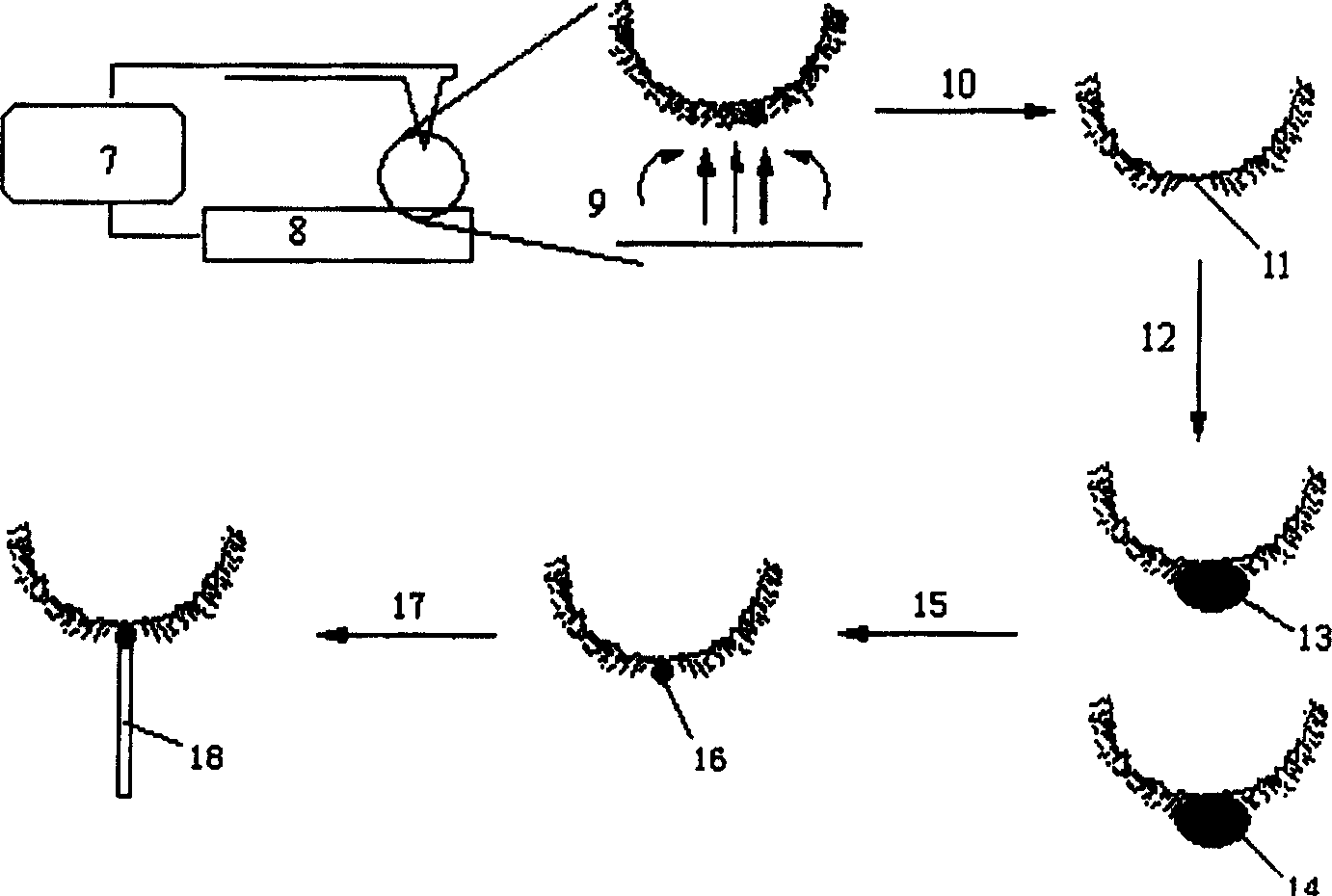Method for preparing probe tip of nano tube
A probe tip and nanotube technology, which is applied in the field of nanotube probe tip preparation, can solve the problems of low efficiency, uncontrollable growth point position and size, etc., and achieves the effects of simple equipment, convenient operation and improved resolution.
- Summary
- Abstract
- Description
- Claims
- Application Information
AI Technical Summary
Problems solved by technology
Method used
Image
Examples
preparation example Construction
[0024] The method for preparing the tip of a nanotube probe of the present invention includes the following steps:
[0025] (1) Modify the hydrophobic monolayer film on the surface of the probe tip,
[0026] (2) The hydrophobic monolayer film at the tip of the needle tip is removed or oxidized into a hydrophilic film by a pulsed electric field,
[0027] (3) Calculate the size of the activated area by detecting the effect of the needle tip applied by the electric field on the surface of the standard sample through the scanning probe microscope,
[0028] (4) The hydrophilic zone at the tip of the needle absorbs catalyst droplets to fix the catalyst particles,
[0029] (5) Place the needle tip loaded with catalyst nanoparticles in the nanotube reactor to grow nanotubes.
[0030] The probe tip may be a tip made of a silicon semiconductor material, or a silicon tip that has been coated with a metal or non-metal coating film or a compound coating film.
[0031] The hydrophobic monolayer...
Embodiment
[0039] Implementation example, needle tip hydrophobization treatment: the clean silicon needle tip was immersed in a benzene solution of 0.1% (volume ratio) octadecyltrichlorosilane for 26 hours, then taken out, immersed in chloroform and ethanol in turn, and then dried with nitrogen. Selective activation of the hydrophobic monolayer film of the silicon needle tip: control the distance between the needle tip of the hydrophobic film and the gold film sample, and apply a pulse voltage such as 0.4 volts for 100 milliseconds to complete the activation. Fixation of catalyst particles: immerse the activated needle tip in a 0.5 molar ferric nitrate solution, take it out and dry it in a drying oven at 110°C for 2 hours. Growing carbon nanotubes: Put the needle tip fixed with the catalyst into the furnace and pass 0.5 L / min of ethylene gas, and grow it at 750 degrees Celsius for 30 minutes.
PUM
| Property | Measurement | Unit |
|---|---|---|
| diameter | aaaaa | aaaaa |
| diameter | aaaaa | aaaaa |
Abstract
Description
Claims
Application Information
 Login to View More
Login to View More - R&D
- Intellectual Property
- Life Sciences
- Materials
- Tech Scout
- Unparalleled Data Quality
- Higher Quality Content
- 60% Fewer Hallucinations
Browse by: Latest US Patents, China's latest patents, Technical Efficacy Thesaurus, Application Domain, Technology Topic, Popular Technical Reports.
© 2025 PatSnap. All rights reserved.Legal|Privacy policy|Modern Slavery Act Transparency Statement|Sitemap|About US| Contact US: help@patsnap.com



